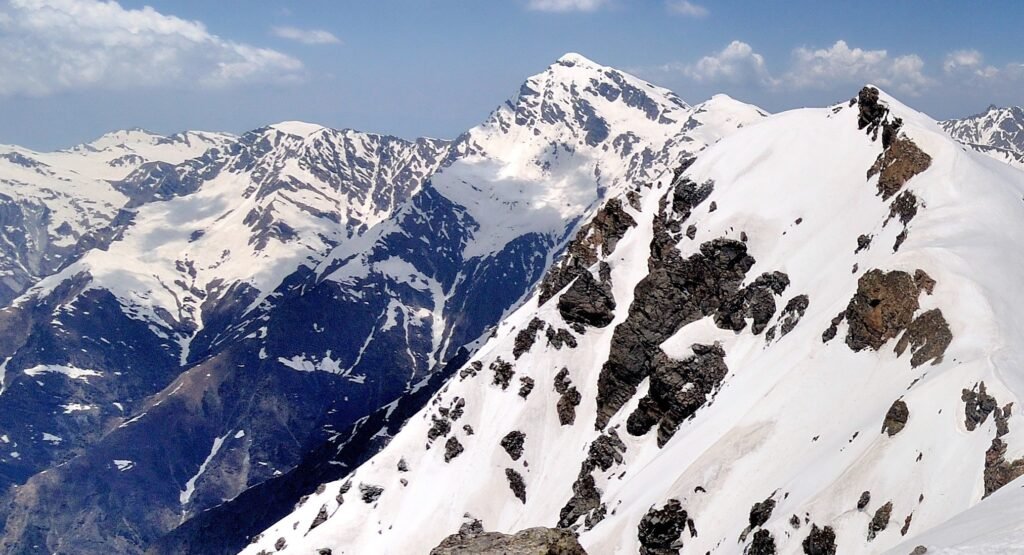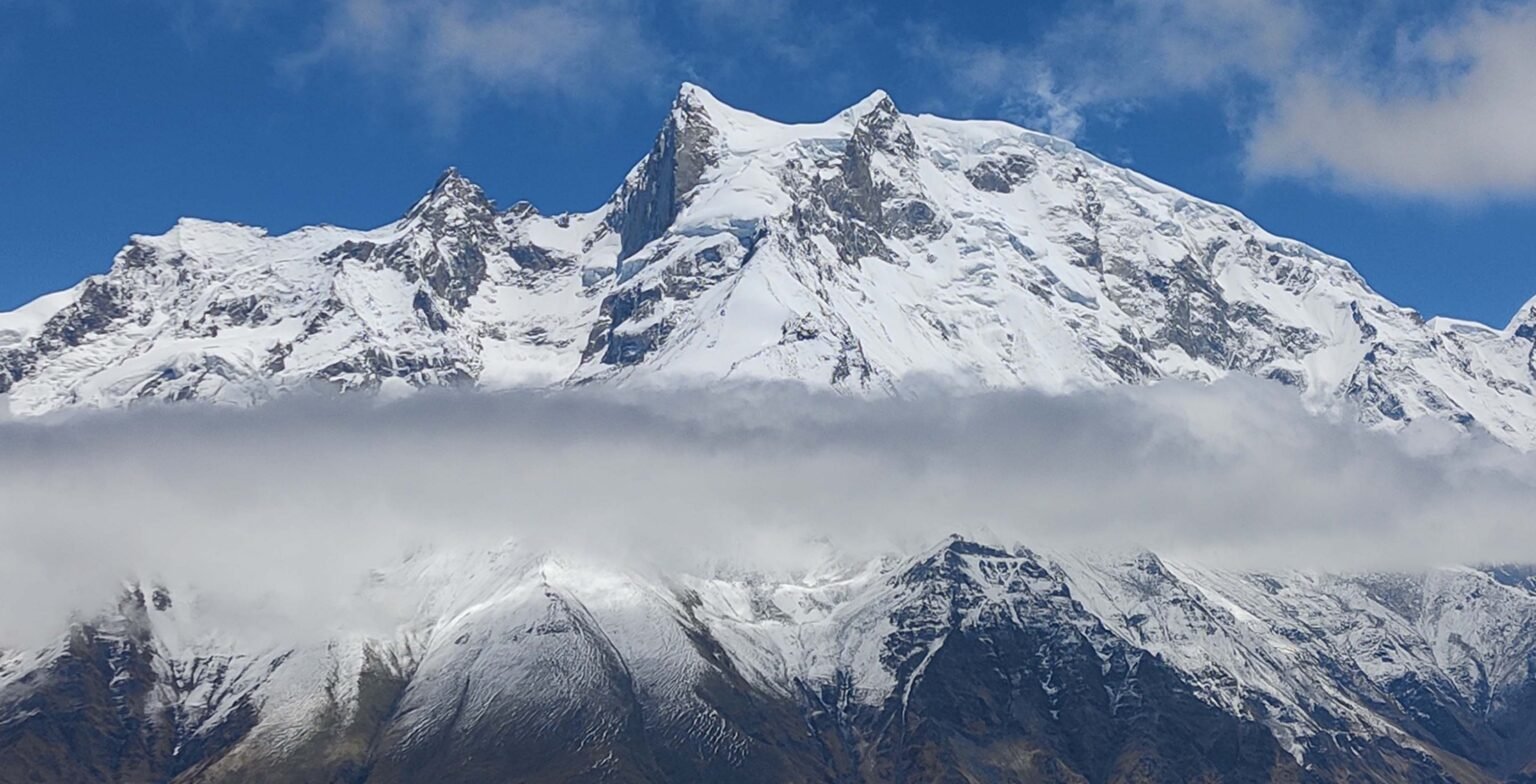The Bali Pass Trek is not just a trekking route; it’s a journey that marries mythological history, raw Himalayan wilderness, ancient village life, and spiritual significance into one unforgettable adventure. Located in the Garhwal Himalayas of Uttarakhand, India, Bali Pass stands at an intimidating 4,950 meters (16,200 ft), offering trekkers breathtaking 360° views of snow-clad peaks, mesmerising valleys, and cultural landmarks that connect the pilgrim’s path of Yamunotri with the pristine meadows of Har Ki Dun valley.
For seasoned trekkers, this is an all-in-one Himalayan epic, featuring glaciers, alpine meadows, high-altitude lakes, challenging ascents, and descents into sacred territory. If completed with respect and preparation, Bali Pass is not just a trek; it’s a spiritual and personal milestone.

General Trip Charges (2025 Pricing)
Group Packages (per person): ₹18,000–₹22,000 (incl. guide, food, camps, permits).
Transport (Dehradun ↔ Sankri / Janki Chatti): ₹2,500–₹4,000.
Porter/Mule: ₹600–₹800/day.
Miscellaneous: Snacks, local entry fees ~₹500–₹1,000.
Total Estimate: ₹25,000–₹30,000, excluding personal gear.
Essential Gear Checklist
- Sturdy trekking shoes (snow grip recommended).
- Layered clothing for temperatures ranging from +20°C to -6°C.
- Wool gloves, beanies.
- Trekking pole for steep sections.
- Sunglasses & sunscreen (snow glare is intense).
- Water purification tablets/filters.
- Rain gear.
- First-aid kit with AMS (Altitude Sickness) medication.
Route, Geography & Trek Profile
The Bali Pass Trek begins in lush pine-scented valleys and ascends gradually towards the jagged and icy ridges of the high Himalayas.
Typical Route:
- Day 1: Sankri (1,950m) – Gateway village with homestays.
- Day 2: Taluka → Seema (2,560m) – Pine forests & river camping.
- Day 3: Seema → Devsu Bugyal – Expansive high-altitude meadow.
- Day 4: Devsu Bugyal → Ruinsara Tal (3,600m) – Glacial lake.
- Day 5: Ruinsara Tal → Odari – Steep approach to snowline.
- Day 6: Odari → Bali Pass (4,950m) → Lower Dhamni – Summit day.
- Day 7: Lower Dhamni → Yamunotri → Janki Chatti – Temple visit and exit.
Trek Distance: ~55 kilometres.
Duration: 7–8 days.
Grade: Difficult – Requires experience at altitude above 4,000m.
Best Seasons: Late May–June and September–October.
Geographical Highlights:
- Rivers: Tons River, Ruinsara Gad.
- Mountain Ranges Visible: Bandarpoonch, Kalanag, Swargarohini, Chaukhamba.
- Terrain Diversity: Dense forests → Bugyals (meadows) → Glacial moraine → Snowfields → Steep scree descents.
A Walk Through History
Bali Pass’s name is said to come from King Bali, a revered and just ruler of ancient Indian mythology from the Ramayana era. Local Garhwali legends narrate that King Bali journeyed through this mountain path, which later served as a natural trade and pilgrimage route.
Historically, this high-altitude corridor connected the Rupin and Supin valleys with Yamunotri, allowing traders from isolated Himalayan settlements to exchange essentials such as grains, salt, wool, herbs, and handicrafts. This exchange was not just economic; it built cultural familiarity between river valleys separated by towering ranges. Some elders in Osla and Gangad still share oral stories of traders and pilgrims braving the snowstorms here.
The trek has always carried a dual essence: a pragmatic trail for survival and a spiritual path for seekers. Today’s trekkers walk in the footsteps of shepherds, merchants, warriors, pilgrims, and perhaps even legendary kings.
Population & Village Life
Permanent settlements don’t exist at the high-altitude pass, but the lower reaches are dotted with picturesque villages like Taluka, Osla, and Gangad, each inhabited by hardy people deeply connected to their mountainous environment.
- Architecture: Two-story wooden houses with stone roofs to withstand snow.
- Lifestyle: Self-sufficient, families farm buckwheat, potatoes, rajma (kidney beans), and tend to goats and sheep.
- Culture: Strong oral storytelling traditions, folk songs, and seasonal festivals.
- Language: Garhwali, Hindi.
- Clothing: Woollen garments, often handmade, with vibrant colours.
In Osla, the Duryodhana Temple stands as a fascinating cultural anomaly—locals here worship Duryodhana from the Mahabharata, pointing to deep-rooted historic stories unique to the region.
Local Economy
The economy is a mix of:
- Agriculture & Horticulture: Potatoes, apples, and rajma.
- Tourism & Trekking Services: Guides, porters, cooks, mule services.
- Sheep & Goat Rearing: Producing wool for weaving traditional clothing.
- Seasonal Handicrafts: Shawls, rugs, and wooden carvings.
Tourism has brought prosperity, but also the need for sustainable practices to avoid environmental damage. Trekkers must be mindful of their ecological footprint.
Climate & Weather Patterns
Summer (May–June):
- Day: 15°C to 20°C
- Night: 0°C to 5°C
- Snow persists near the pass; meadows bloom with wildflowers.
Autumn (Sept–Oct):
- Clear skies, golden meadows, excellent photography light.
- Day: 10°C to 15°C
- Night: -2°C to -6°C
Winter: The Pass is inaccessible due to heavy snow.
Monsoon (July–Aug): Risk of landslides and slippery trails; not recommended.
Beautiful Places & Landmarks on the Trek
Ruinsara Tal: A picture-perfect glacial lake reflecting snow peaks.
Devsu Bugyal: Meadows alive with alpine flowers, offering rare Himalayan wildlife sightings.
Osla Village: Home to charming wooden architecture and living history.
Yamunotri Temple: Sacred Hindu pilgrimage site, one of the Char Dhams.
Peaks on Display: Swargarohini Range (linked to Pandava legends), Bandarpoonch (resembles a monkey’s tail), Black Peak (Kalanag).
Cuisine & Food on the Trek
- Local Staples: Rajma-chawal (kidney beans with rice), red rice, rotis made of mandua (finger millet).
- Trek Meals: Organised tours usually provide dal, rice, chapati, vegetables, and hot soups in camps.
- Special Treat: Himalayan honey and village-made ghee.
FAQs about Bali Pass Trek
Is Bali Pass suitable for beginners?
No, only seasoned trekkers with high-altitude experience should attempt it.
What’s the highest point?
Bali Pass summit: 4,950 meters.
How long does it take?
7–8 days on average from Sankri to Yamunotri.
Can we do it solo?
Possible, but not recommended, a local guide is safer.
Are there mobile signals?
Only up to Purola; after that, satellite phones or the guide’s network may be the only option.
Is there snow?
May–June and October, expect snow at higher altitudes, especially near the pass.
Fitness requirement?
Train for at least 6–8 weeks with cardio, strength, and endurance exercises.
Pro Tips for Trekkers
- Always acclimatise properly, camp for short durations before going higher.
- Hydration is your best defence against altitude sickness.
- Start early each trekking day to avoid afternoon winds and weather changes.
- Carry enough cash, no ATMs after Mori.
- Respect local customs, especially in Osla and Yamunotri.
Final Thoughts
The Bali Pass Trek is a unique convergence of ancient legend, Himalayan might, sacred pilgrimage, and cultural heritage. Unlike commercial treks, Bali Pass demands respect, preparedness, and humility from those who venture to its peak.
For the adventurer seeking a soul-stirring journey, one that challenges the body and transforms the spirit, the Bali Pass is an expedition worth every step.
